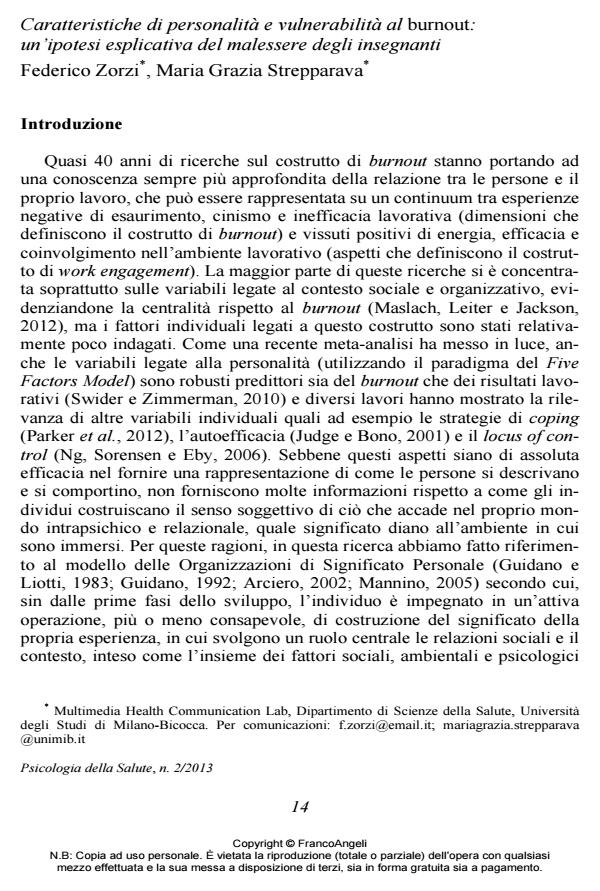Personality characteristics and vulnerability to burnout: an explanatory hypothesis of teachers’ distress
Journal title PSICOLOGIA DELLA SALUTE
Author/s Federico Zorzi, Maria Grazia Strepparava
Publishing Year 2013 Issue 2013/2
Language Italian Pages 19 P. 14-32 File size 346 KB
DOI 10.3280/PDS2013-002003
DOI is like a bar code for intellectual property: to have more infomation
click here
Below, you can see the article first page
If you want to buy this article in PDF format, you can do it, following the instructions to buy download credits

FrancoAngeli is member of Publishers International Linking Association, Inc (PILA), a not-for-profit association which run the CrossRef service enabling links to and from online scholarly content.
Researches and interventions on burnout focused primarily on organizational and cultural context, showing their predictive capabilities on that construct. Individual factors had been studied mostly in terms of coping strategies and of locus of control, but it is still relatively unknown how the personality and the relational aspects affect the health of the professionals and their work outcomes, as pointed out by many researchers. This research aims to shed light on this aspects using the Personal Meaning Organizations model (Guidano and Liotti, 1983), trying to show its applicability outside of the clinical context in which it was formulated and developed in origin. The hypothesis of the authors is that different patterns of meaning attribution are related to specific vulnerability to the various aspects that contribute to generate the burnout. The Maslach Burnout Inventory (MBI) and the Questionnaire for the evaluation of Personal Meaning Organizations (QSP) were submitted to a sample of 566 teachers from 14 Italian schools. The results show significant differences between the four Organizations in the scores of the Emotional Exhaustion and Personal Accomplishment scales of the MBI, while the dimension of Depersonalization is related to the number of years of work experience. The authors believe therefore that it is important for the teachers’ wellbeing to propose training and interventions programs that take into account the individual differences in relational and intrapsychic functioning.
Keywords: Burnout, Personal Meaning Organizations, personality, teachers
Federico Zorzi, Maria Grazia Strepparava, Caratteristiche di personalità e vulnerabilità al burnout: un’ipotesi esplicativa del malessere degli insegnanti in "PSICOLOGIA DELLA SALUTE" 2/2013, pp 14-32, DOI: 10.3280/PDS2013-002003